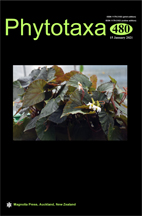Abstract
This study provides the first comprehensive checklist and analysis of the species of Fabaceae from Nigeria, based on over 5000 herbarium collections and the completed "Flora of West Tropical Africa (FWTA)". We report 552 taxa, belonging to 540 species in 155 genera from six subfamilies, with an outstanding number of taxa (36) representing new records for the country. We mapped the distribution of the species using their occurrence records obtained from GBIF and our own field and herbarium collections. The majority of taxa (43%) was distributed in the savanna vegetation of northern Nigeria, followed by the adjacent tropical forest formations of southern Nigeria (34%), and they were found in highest percentages in Papilionoideae (67%) and Caesalpinioideae (19%), followed by Deterioideae (11%), Cercidoideae and Dialioideae (6% each) and Duparquetioideae (<1%) subfamilies. Endemic and native taxa were 5 and 73% respectively. The most prevalent subfamilies in terms of endemicity were Papilionoideae (14 species), and Deterioideae (11 species), while the most prevalent genera were Indigofera (three species), Dalbergia (three species), Brachystegia (two species) and Cryptosepalum (two species). We found that the majority (37%) of the species were phanerophytes and the fewest were cryptophytes (0.7%). These results suggest that Nigeria has a considerable diversity of legumes, with a predominant distribution in the savanna, probably due to the demanding environmental conditions limiting the dispersion of generalists or invasive species. The diversity of growth forms and distribution patterns of Nigerian legumes could be useful in screening these plants for other potential uses, such as conservation planning or specific agricultural purposes. We recommend a similar study on other families as this will help locals, natural scientists, governments and conservation bodies to recognise and appreciate the flora of the country.

